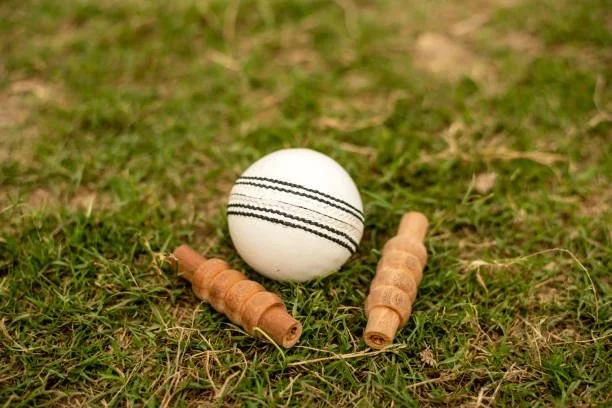Cricket Ball Construction: Exploring the Differences Between 4-Piece and 2-Piece Balls
In the exciting cricket world, where bat meets ball, the importance of the cricket ball cannot be denied. It is not just a leather-bound sphere; it is the heart and soul of the game.
Today, we will discover the complex details of cricket ball construction, focusing on the intriguing face-off: 4-piece vs. 2-piece cricket balls.
Without any further ado, let's get started!
Cricket Ball - A Vital Game’s Vital Core
A cricket ball is not just an inanimate object; it is the essence of the cricket. This small study sphere carries the hopes and dreams of players and fans alike. Let us uncover its significance and definition.
The cricket ball is a hard-leather-clad orb used in the game, but it is so much more than that. It is a symbol of power, energy, strategy, and precision. In the hands of a bowler, it transforms into a weapon to deceive batsmen and swing the game’s tide.
Furthermore, the significance of the cricket ball lies in its capacity to dictate the game’s dynamics. Its weight, hardness, and seam orientation can produce unexpected swings and bonuses, making it an enigmatic challenge for players.
The art of mastering the cricket ball is an ever-evolving saga where strategy and skill converge to shape the sport’s destiny.
What are 4-Piece Cricket Balls?
Have you ever wondered about the inner workings of a cricket ball?
A 4-piece cricket ball is an intricate construction comprising 4 distinct components. These include:
Leather Cover: the outer layer is crafted from high-quality leather, ensuring durability and consistent performance. This outer shell forms the ball’s protective armor.
Core: Beneath the leather exterior lies the heart of the ball, the core. Typically, it's made of rubber and cork, giving the ball its weight and resilience. This core is responsible for the bounce and feel of the ball in a bowler’s hand.
Stitching: seams hold a special significance in a bowler’s heart. The precise stitching, done carefully, creates the ball’s signature seam. This seam is the key to generating swing and seam movement, confounding batsmen.
Layering: typically, multiple layers wound with strong strings provide stability to the core. These layers are a pivotal part of the ball’s construction, giving it shape and consistency.
What are 2-piece Cricket Balls?
Another type of cricket ball extensively used in the limited-over matches, T20- cricket and junior cricket. It is composed of the following components:
Leather Exterior: Like its 4-piece counterpart, the outer shell of a 2-piece cricket ball is made of high-grade leather. This leather cover ensures longevity and maintains the ball’s shape.
Seam: the seam, integral to a bowler’s craft, is a prominent feature of the 2-piece ball. This seam is where the magic happens, creating swing and seam movement, making life difficult for batsmen.
Key Differences Between 4-piece and 2-piece Cricket Balls
The choice between a 4-piece and a 2-piece cricket ball depends on various factors. These are briefly stated as follows:
Construction and Components
The primary construction of the 4-piece cricket ball consists of 4 components: a leather cover, precise stitching, core, and rubber.
The 2-piece cricket ball is constructed with 2 components: leather exteriors and prominent seam.
Seam and Swing Movement
4-piece balls often generate more pronounced swing and seam movement due to their intricate construction, challenging batsmen's skills, while 2-piece cricket balls show less seam and movement.
Durability
2-piece cricket balls are designed for shorter formats and offer better durability, maintaining their shape and performances even after multiple overs. On the other hand, 4-piece cricket balls are well-suited for the test formats and 50-over ODIs.
Affordability
2-piece balls are more budget-friendly and ideal for junior cricket and practice sessions.
Format Specificity
The choice of the ball type is closely tied to the format being played. 4-piece balls shine in Test cricket, while 2-piece balls are favored in limited-overs matches, balancing swing and longevity.
How Does Cricket Ball Type Affect the Performance?
The choice between a 4-piece and 2-piece cricket ball hugely influences how the game will unfold, affecting key performance factors. These include:
Bounce
The 4-piece cricket ball tends to bounce slightly higher, challenging batsmen to adjust their shots. In contrast, 2-piece balls offer a more predictable and lower bounce, aiding aggressive batting.
Swing
4-piece balls are known for their swing, often moving unpredictably through the air. Bowlers exploit this to outfox batsmen. 2-piece balls provide some swing but with intensity.
Seam Movement
The seam of a 4-piece ball aids seam movement, creating uncertainty for the batsmen. 2-piece balls offer seam movement, but it is less dramatic.
In a Nutshell
In summary, 4-piece balls bring swing, seam, and complexity, while 2-piece balls offer durability and affordability. Your choice influences the game’s swing, bounce, and seam movement. Selecting the right ball for the right format is crucial.
Visit Cricnix for top-quality cricket equipment and expert advice on selecting the perfect ball for your game. It will help to elevate your performance and make your game more interesting.

